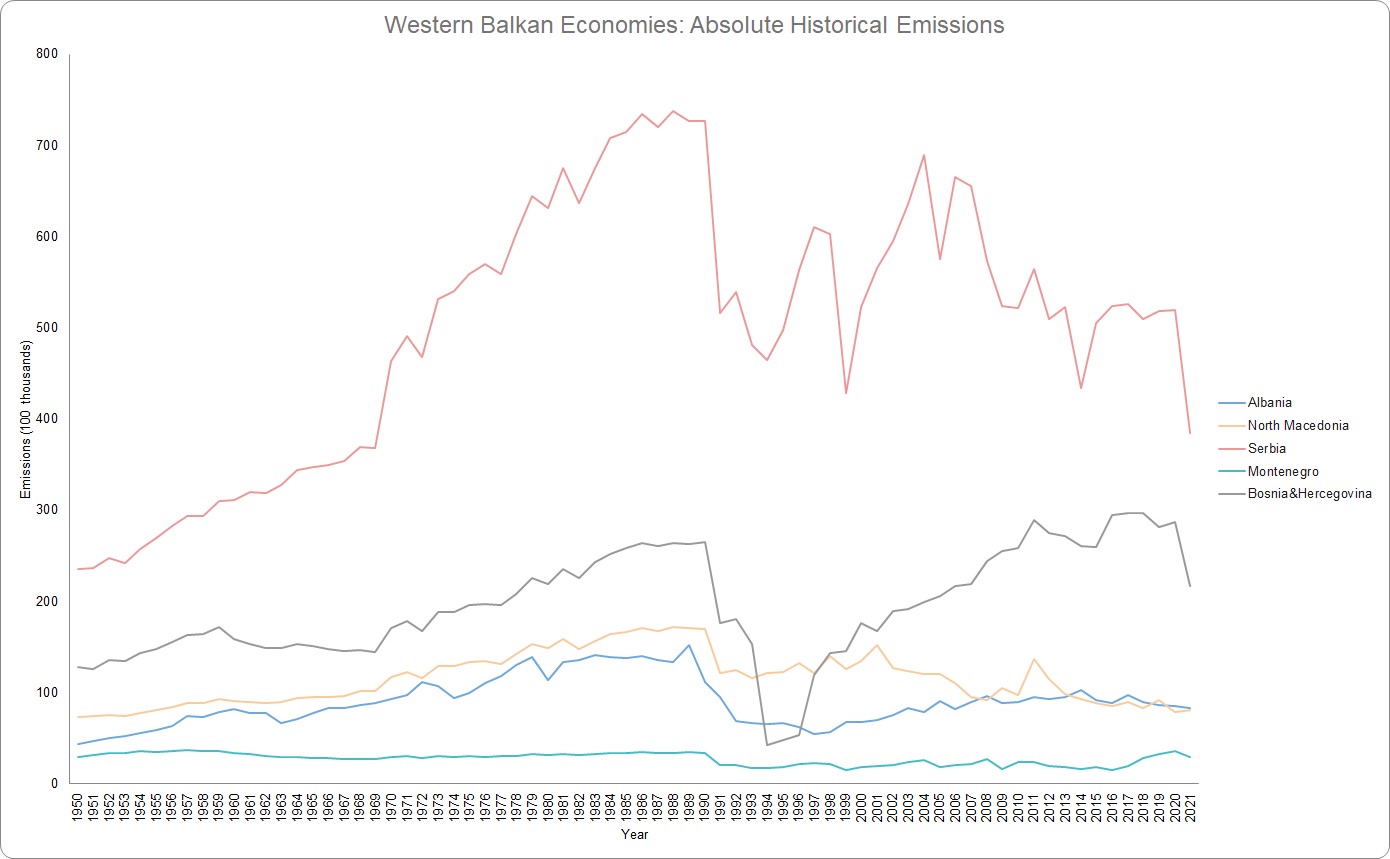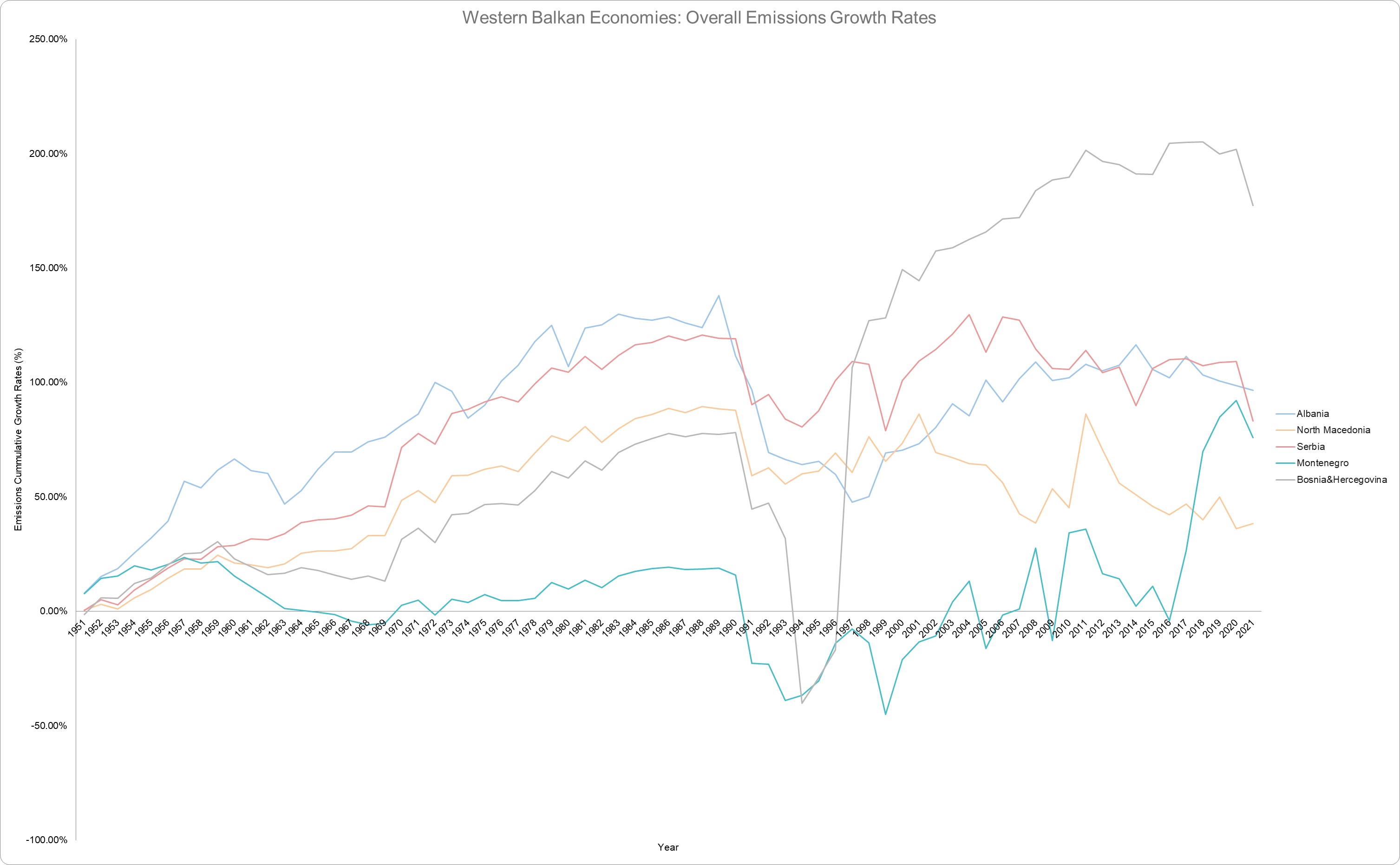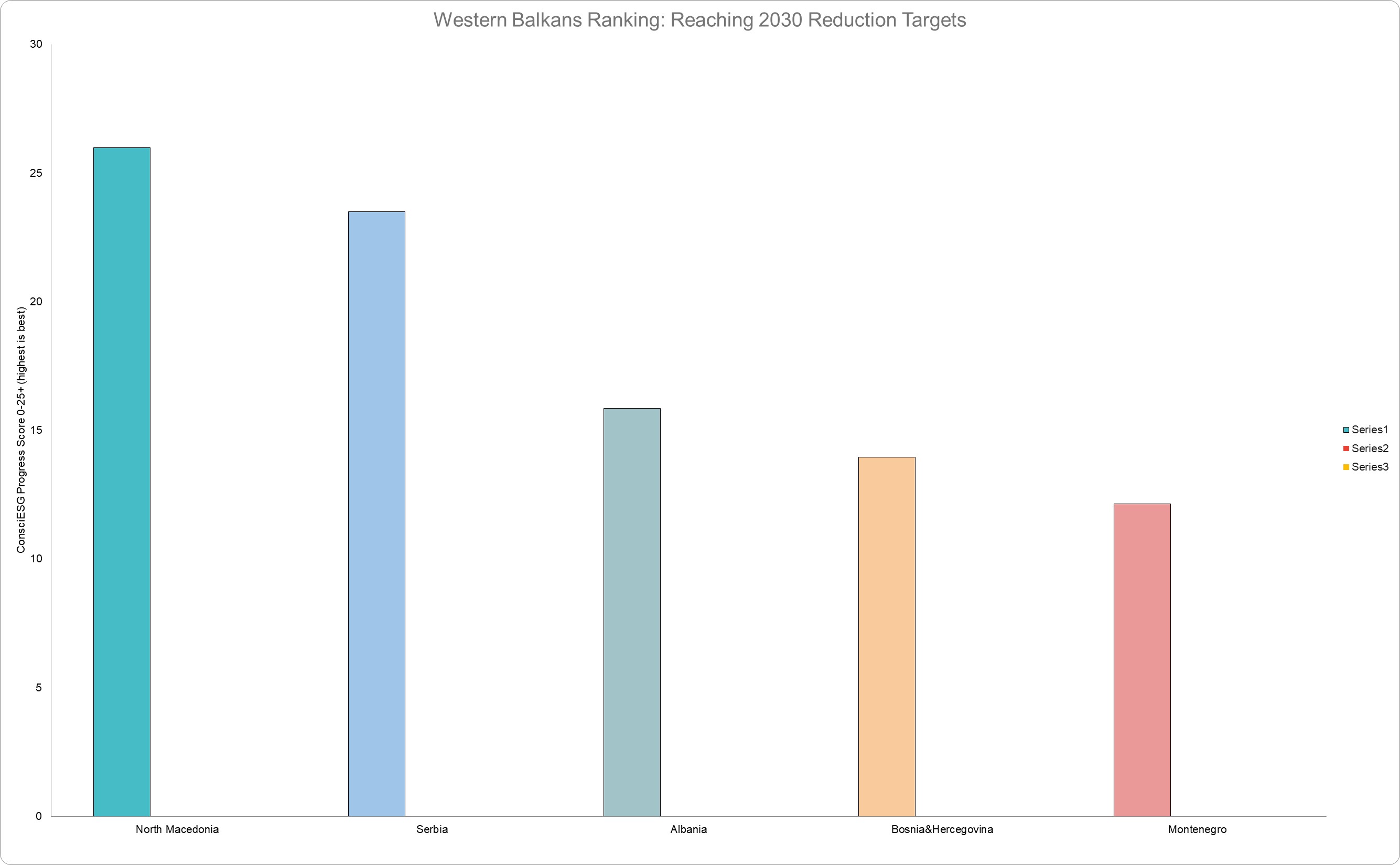The greenwashing scandals in the EU were followed by serious regulatory revisions and updates in the EU, with more than 50,000 EU-based companies now expected to start their non-financial disclosures in alignment with the CSRD framework. The same regulations are expected to affect similar companies in the Emerging European markets, including many Western Balkan countries, whose governments have already made commitments to their alignment with the EU Green Deal.
In its commitment to reach climate neutrality by 2050, the EU has committed to reduce emissions by 55% by 2030. To that end, the Western Balkan countries are already required to adopt strategies that consider the entire product lifecycle, with 2025 as a deadline for their regulatory alignment to the EU Climate Law for carbon neutrality. But exactly how close is every Western Balkan economy to reaching carbon neutrality?
We analyzed the historical emissions of Albania, Montenegro, North Macedonia, Serbia and Bosnia-Hercegovina. The absolute emissions series is shown in Figure 1 below. Serbia dominates by absolute emissions levels, with a large discrepancy from Bosnia, followed by North Macedonia, Albania and Montenegro.
Figure 1: Western Balkan economies by absolute emissions. Historical overview. Kosovo is absent due to lack of emissions data.
To assess each of their progress to meeting targets, we set the common target of 55% reduction by 2030 and see which of the countries is more aligned with the targets and which is moving further away.
To do so, we first extract the historical change components, which are shown in Figure 2 below. What is immediately noticeable is that aside from Montenegro’s consecutive reduction in the late 1990s-early 2000s and Bosnia’s brief late 1990s reduction, these economies have all realized positive increases in emissions in the past 70 years. North Macedonia is showing serious effort at emissions reduction in recent years and Serbia follows with a more flat-sloped reduction. Albania has realized a slight overall increase while Bosnia and Montenegro seem on an accelerated trajectory to emissions increase in the recent years (2017-onwards).
Figure 2: Cumulative Emissions Growth Rates for Western Balkan Economies.
Using the progress from 1990 to present, a progress score to targets was computed using the ConsciESG proprietary model. The resulting scores, on a positive scale 0-25+, with highest meaning largest progress towards the 2030 - 55% emissions reduction target (aligned with the EU Green Deal), are shown in Figure 3 below. As demonstrated, North Macedonia dominates the ranking in terms of progress to the 55% reduction target. Serbia follows second, Albania third, with Bosnia and Montenegro fourth and fifth respectively. A ConsciESG score 0-10 indicates that the economy is moving in the opposite direction of targets which indicates here that all the five countries examined have been moving steadily towards their net-zero targets. A score in the territory 10-25 indicates a convergence to targets. Montenegro is on the lower end of the distribution, indicating a need for a more active net-zero agenda.
Figure 3: Using the ConsciESG model to rank the Western Balkan economies based on their realized progress to 2030 targets.
In conclusion, The Western Balkans economies, although considered as a cluster by the EU governing bodies, are in different parts of their journey to net-zero commitments. As such, they should each set realistic targets that accounts for their specific socio-economic conditions, that will also require targeted legislations, that refrain from introducing large negative externalities on their respective economies and the standard of living of their citizens.



